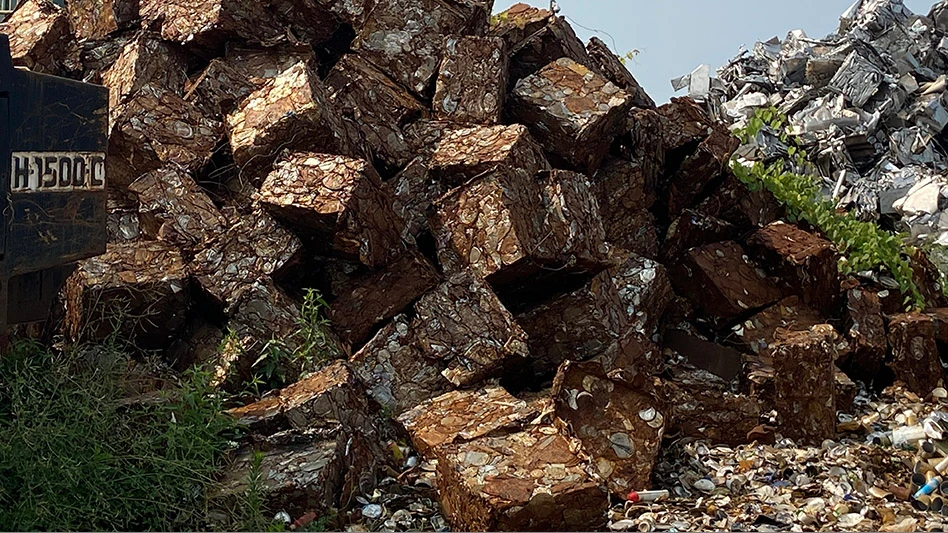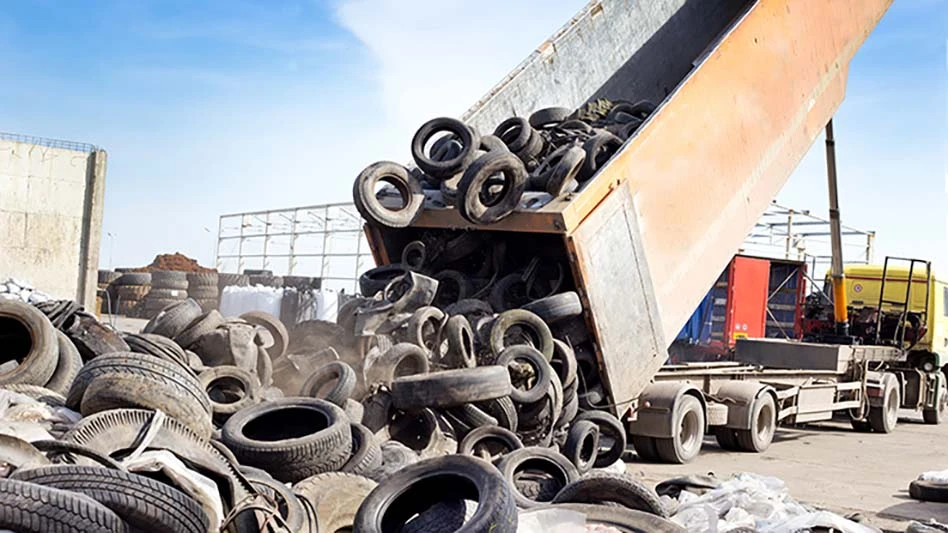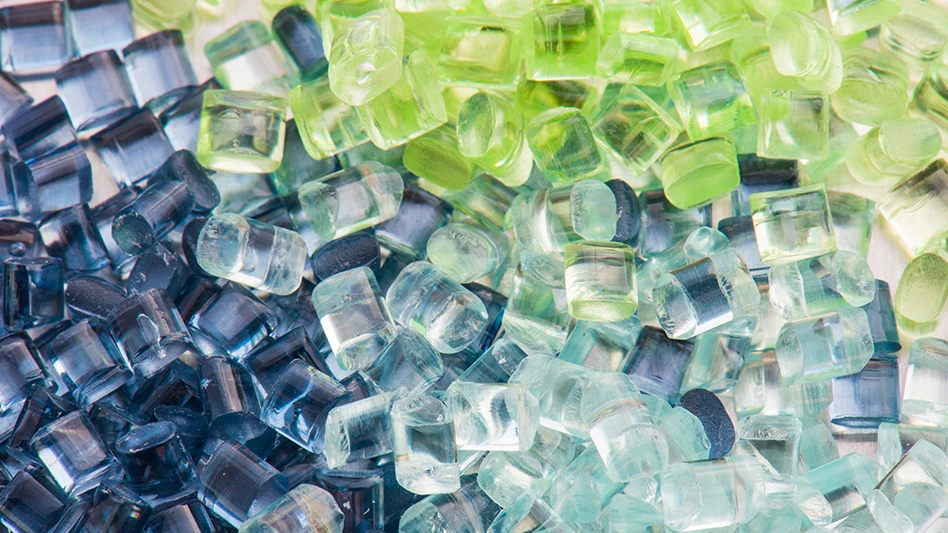In 2006, a mere five years after surpassing plastic’s usage among cars and light trucks worldwide, aluminum moved past iron to take second place among automotive materials. According to the Ducker Worldwide report released in 2006—Aluminum Content for Light Non-Commercial Vehicles to Be Assembled in North America, Japan and the European Union in 2006—the worldwide average aluminum content in automobiles reached almost 280 pounds for the 2006 model year. The report brought even better news of aluminum’s gains in the North American auto market, where average content reached 319 pounds, an increase of almost 24 percent over the past five years.
In historical context, aluminum’s gains in the first five years of the new millennium represent merely a continuation of trends ongoing since the mid-1970s—a period during which aluminum use in North American light vehicles has increased every single year for the past 30 years. Among the factors driving that increased usage are successive oil shocks, legislation encouraging automakers to increase vehicles’ fuel efficiency and consumers’ desire for larger vehicles with more power, expanded features and improved performance.
What will drive material choices going forward? How is the aluminum industry helping automakers meet future challenges? What new auto aluminum technologies are on the horizon? This story examines those issues.
FOCUS ON R&D. Six weeks after the release of the Ducker report, at the Aluminum Association’s spring meeting, Dr. Gerald Cole, president of Lightweight Strategies LLC, spoke to the opportunities available to auto aluminum. Lightweight materials such as aluminum, he said, were now uniquely positioned to assist automakers in light of a number of factors, including increasing gasoline prices, American’s desire for independence from foreign oil and concern about automotive emissions’ contribution to global warming.
Cole, former senior technical specialist at the Ford Motor Co., said Ford expected consumers to continue shifting away from full-size pickup trucks and SUVs and toward crossover vehicles and more fuel-efficient sedans (through the first seven months of 2006, U.S. passenger car sales were up 2.2 percent, while light-truck sales were down 10.6 percent). Both Ford and General Motors, he added, were making major investments in hybrid and flex-fuel technologies.
"Is the aluminum industry participating in this technological shift?" Cole asked.
"More and smarter research and development is required to develop low-cost, functional lightweight aluminum automotive materials that could help keep the U.S. at the forefront of the auto industry," Cole said. As an example, he cited the potential for continuous casting to help make aluminum automotive sheet products more competitive on a cost basis with steel in body applications.
"Significant R&D is required to make continuous cast aluminum a viable process for automotive sheet stamping," Cole said.
The Ducker report concurs that in the use of aluminum for "new innovative applications"—which it defines as all components other than powertrain, driveline, wheels and heat exchangers—in light vehicles, North America trails Europe, with Japan a distant third. In the area of aluminum closure sheet shipments, Europe will consume more than North America and Japan combined in 2006, and Ducker projects that will continue to be the case through the end of the decade.
Two-thirds of the 570 million pounds of aluminum sheet that were shipped worldwide in 2006 (double that shipped in 2002) went to European automakers, including BMW and Mercedes—which together produce more than 700,000 partial aluminum body structures annually—and Audi, Jaguar, Ferrari, Rolls Royce and Lotus, which combined produce approximately 100,000 all-aluminum bodies.
Similarly, according to the Ducker report, Europe is "far and away" the biggest user of aluminum for structural components of the chassis—consuming more than double the tonnage of aluminum for those components than the North American and Japanese regions combined.
Coasting or Driving Ahead? Notwithstanding Europe’s lead in innovative aluminum applications, 2006-model North American cars still exceeded their European counterparts in their use of aluminum by almost 60 pounds per vehicle, on average. This is a result of North America’s preference for generally larger, more aluminum-intensive engines and the higher percentage of (larger) automatic transmissions in use, whereas diesel engines are more prevalent in Europe.
Ducker further reports that, while the worldwide conversion to aluminum cylinder heads for light-vehicle engines—a traditional driver of growth in aluminum use—is almost complete, considerable upside potential remains for aluminum’s use in engine blocks. For the first time, in 2006, a majority of engine blocks in North America—52 percent—were aluminum. Ducker forecasts that the ongoing changeover from iron to aluminum blocks will be a major driver of growth in aluminum use in the United States and worldwide through the end of the decade.
If iron’s use in cars is waning, steel represents a harder target for aluminum. Nonetheless, the U.S. aluminum industry is working with government researchers to develop cost-effective aluminum solutions in innovative applications to enhance fuel efficiency and to contribute to the development of more environmentally friendly light vehicles.
Alcoa, in partnership with the Pacific Northwest National Laboratory (PNNL), DaimlerChrysler and the Department of Energy’s Office of Heavy Vehicle Technologies, has completed a project that involved developing three prototype lightweight vehicle frames. The prototypes, aluminum and steel hybrids, were tested on the chassis of a 2002 Dodge Durango in 2006.
"The test results exceeded everyone’s expectations, successful to the point that we have initiated a more challenging follow-up program called the Next Generation Frame," Mark Smith, who leads the Energy Materials Group for PNNL, says.
The Next Generation Frame prototype abandoned the steel portion of the frame, focusing entirely on aluminum. PNNL reports that the aluminum frame resulted in weight savings exceeding 40 percent. The aluminum frame was then tested on the latest model of the Dodge Durango.
FUTURE NOW. Initiatives such as the Next Generation Frame are significant. Even as the aluminum-block engine continues to conquer the automotive world, a paradigm shift brought on by, say, another oil shock or advances in fuel-cell technology, could curtail aluminum’s gains in the North American engine market.
Perhaps the automotive future brought on by such a paradigm shift might look more like the recently unveiled Tesla Roadster. The car’s "engine" consists of one of the largest and most advanced lithium-ion battery packs ever built—which San Carlos, Calif-based Tesla Motors says is capable of powering the car from zero to 60 miles per hour in four seconds flat. That’s right: an electric car with Ferrari-like acceleration.
Part of the secret to this world-class performance is its aluminum chassis—built by Hydro Aluminum and based on the chassis used in the Lotus Elise. The bonded, extruded aluminum chassis/tub helps keep the Tesla Roadster at a mere 2,400 pounds.
Aluminum is also used to help keep the motor running fast and cool. Its aluminum housing, complete with air-cooling fins, allows it to operate continuously at 250 degrees Fahrenheit so that it can run at peak power.
AMERICA’S BEST SELLER GETS BETTER. Toyota subsidiary Bodine Aluminum, meanwhile, is working to perfect the good-old gasoline-powered internal-combustion engine. The company, which manufactures aluminum engine blocks and cylinder heads for Toyota’s top-selling Camry as well as other models, instituted a host of new technologies and cost-cutting measures for the 2007 model year.
As reported in the April 2006 issue of Bloomberg Markets, Bodine has chopped the cost of producing the powerplant for the 2007 Camry by almost 50 percent throughout the past three years by using smaller, less-expensive molds to produce the engine components.
A redesign of the preceding model’s 3.3-liter engine block lopped 55 pounds—a 27 percent reduction—from its mass, while boosting its capacity to 3.5 liters and the car’s acceleration by 40 percent. The new cylinder head design contains fewer ports, through which air and fuel travel, requiring fewer cores in the mold. Partly as a result of this redesign, Bodine has been able to install 12-foot casting machines in place of its old 30-foot machines.
Similarly, the 30-foot casters previously used to manufacture the Camry’s engine blocks have been replaced by far smaller, more efficient casting machines. The new casters use up to 40 percent less pressure to inject the aluminum into the molds, ultimately creating stronger blocks with fewer air bubbles. The reduced injection speed means Toyota can manufacture a V-6 engine block in a mold held together with 35 percent less pressure using a die that weighs 5 tons rather than 29 tons.
SAFETY FIRST. When the newest-generation Jaguar XJ was introduced six years ago, it was a revelation. Boasting Alcan’s Aluminum Vehicle Technology—a joining system enabling the production of a sheet-based aluminum structure similar to, but lighter and stiffer than, a conventional stamped structure—the world’s first volume-produced aluminum monocoque car set new standards in fuel efficiency, handling and safety.
Nonetheless, the XJ was essentially an aluminum version of a steel car. The new Jaguar XK (engineered in part by Novelis, the rolled products supplier) uses far more castings and extrusions than does the XJ—eliminating the need for many of the joints that would have been used to hold stamped pieces together. The result: a stiffer, stronger body for better handling and safety.
An added safety feature installed in the XK convertible is state-of-the-art rollover protection. The system consists of two aluminum arches recessed behind the rear passenger seats. A solid-state gyro sensor system monitors the vehicle and, if it senses the onset of a rollover, deploys the arches to a height above the heads of the rear passengers.
In the front end of the XK, the windshield pillars—the "A-posts"—are supported at the instrument panel with a strong aluminum casting and reinforced with a thick-wall aluminum extrusion in the center. With the hoops in the rear and a reinforced windshield structure in the front, a rollover "cage" is created over the passenger compartment to help protect the heads of passengers who are wearing seat belts.
Designers have focused not only on the safety of those inside the car, but also on the safety of those outside of it. In the event of a pedestrian impact, a deployable aluminum hood on the XK automatically pops up a few inches to create a cushioning effect between the engine and the hood. This deployment—which occurs in less than a tenth of the time it takes to blink an eye—helps to isolate the pedestrian from hard points in the engine compartment.
An advanced sensing system mounted in the front bumper helps discriminate between a pedestrian collision and other possible front-end collisions.
ALUMINUM OUTLOOK. Continuing concerns over energy supplies and the environment point to the continued importance of lightweighting strategies for the foreseeable future. But aluminum must compete with high-strength steel, magnesium and plastics for its share in this market.
Auto aluminum research and development must continue seeking to develop innovative new solutions in all areas of the vehicle—engines, transmission, chassis, suspension, closures, body structures, etc.—because its gains in one area may be offset to some degree by losses in others. Challenges and opportunities are also likely to arise from shifts in consumer preferences (towards smaller vehicles, for example) or even a wholesale "paradigm shift" (a large-scale move toward diesel engines in North America, for example, or widespread adoption of fuel-cell technologies).
The Ducker report predicts continuing growth in aluminum’s use in vehicles worldwide on the order of 3 percent to 3.5 percent per year for the rest of the decade. Growth in aluminum from that point onward may well depend on the technologies that are being developed today.
This article first appeared in Aluminum Now, the magazine of the Aluminum Association (www.aluminum.org), and has been reprinted here with permission. The author can be contacted at jsimpson@aluminum.org.

Explore the August 2007 Issue
Check out more from this issue and find your next story to read.
Latest from Recycling Today
- Lautenbach Recycling names business development manager
- Sebright Products partners with German waste management equipment company
- WasteExpo transitions to biennial format for enhanced experiences
- Study highlights progress, challenges in meeting PCR goals for packaging
- Washington legislature passes EPR bill
- PureCycle makes progress on use of PureFive resin in film trials
- New copper alloy achieves unprecedented high-temperature performance
- Gränges boosts profits and sales volume in Q1 2025





